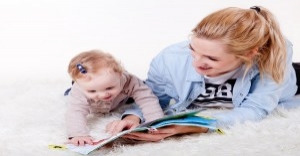Incorporating cultural texts into nursery rhymes is a fantastic way to celebrate diversity and introduce children to different cultures. The following article provides information on The Importance To Incorporate Cultural Text Into Nursery Rhymes, Steps To Incorporate Cultural Texts, Example Adaptions, and more.
The Importance To Incorporate Cultural Text Into Nursery Rhymes
Incorporating cultural text into nursery rhymes is important for several reasons:
-
Promotes Inclusivity and Diversity: By including cultural elements in nursery rhymes, educators can celebrate and respect the diverse backgrounds of all children. This helps create an inclusive environment where every child feels valued and represented.
-
Enhances Cultural Awareness and Understanding: Introducing children to different cultures through nursery rhymes helps them develop an appreciation and understanding of the world’s diversity. It fosters respect and empathy for people from different cultural backgrounds.
-
Supports Language Development: Nursery rhymes with cultural content can expose children to new languages and dialects. This can enhance their linguistic skills and promote bilingualism or multilingualism, which are valuable assets in today’s globalized world.
-
Connects Children to Their Heritage: For children from diverse cultural backgrounds, hearing nursery rhymes that reflect their own heritage can strengthen their sense of identity and pride. It helps them stay connected to their cultural roots.
-
Encourages Multicultural Education: Incorporating cultural texts into nursery rhymes is a step towards multicultural education. It allows educators to teach children about different traditions, customs, and histories in an engaging and age-appropriate way.
-
Promotes Social-Emotional Development: Understanding and appreciating different cultures can enhance children’s social-emotional development. It helps them build positive relationships with peers from diverse backgrounds and develop a sense of empathy and compassion.
-
Boosts Creativity and Imagination: Exposure to a variety of cultural stories and traditions can stimulate children’s creativity and imagination. It broadens their horizons and encourages them to think creatively about the world around them.
By incorporating cultural text into nursery rhymes, educators can provide a rich, diverse, and meaningful learning experience that prepares children to thrive in a multicultural society.
Steps To Incorporate Cultural Texts
1. Select Nursery Rhymes with Universal Themes:
-
Choose nursery rhymes that have universal themes such as friendship, nature, or family. These themes can be easily adapted to include cultural elements.
2. Integrate Cultural Stories and Folktales:
-
Adapt popular cultural stories or folktales into the structure of existing nursery rhymes. For example, retell a traditional story from a specific culture using the melody of a familiar nursery rhyme.
3. Use Multilingual Versions:
-
Incorporate different languages into nursery rhymes. For example, you can teach children to sing the same rhyme in English and then in another language, such as Spanish, Hindi, or Mandarin.
4. Incorporate Cultural Symbols and Objects:
-
Replace objects or characters in nursery rhymes with cultural symbols or items. For example, instead of "Twinkle, Twinkle, Little Star," you could use "Twinkle, Twinkle, Little Lantern" during a celebration of Diwali or Lunar New Year.
5. Add Traditional Instruments:
-
Introduce traditional musical instruments from various cultures into the performance of nursery rhymes. For example, use a tambourine, djembe, or sitar to accompany the rhyme.
6. Create New Verses:
-
Add new verses to existing nursery rhymes that reflect cultural traditions or celebrations. For example, for "Row, Row, Row Your Boat," you could add a verse about rowing to a cultural festival.
7. Include Cultural Costumes and Props:
-
During singing or storytelling sessions, incorporate cultural costumes and props to enhance the cultural experience and bring the nursery rhymes to life.
8. Teach Cultural Dances:
-
Pair nursery rhymes with simple cultural dances. Children can learn the dance steps while singing the rhyme, providing a multi-sensory learning experience.
Example Adaptations
Original Nursery Rhyme: "Twinkle, Twinkle, Little Star"
Twinkle, twinkle, little star,
How I wonder what you are.
Up above the world so high,
Like a diamond in the sky.
Adapted Version: "Twinkle, Twinkle, Little Lantern" for Lunar New Year
Twinkle, twinkle, little lantern,
How you light up the night so bright.
In the festival of the moon,
Bringing joy to everyone.
Twinkle, twinkle, little lantern,
How you light up the night so bright.
Adapted Verse for an Indian Cultural Theme Diwali
Twinkle, twinkle, little diya,
Shining brightly, oh so near.
In the festival of lights you glow,
Bringing joy to all we know.
Twinkle, twinkle, little diya,
Shining brightly, oh so near.
Original Nursery Rhyme: "Mary Had a Little Lamb"
Mary had a little lamb,
Its fleece was white as snow.
And everywhere that Mary went,
The lamb was sure to go.
Adapted Version: "Aisha Had a Little Goat" for an African Cultural Theme
Aisha had a little goat,
Its coat was brown and gold.
And everywhere that Aisha went,
The goat was sure to go.
Original Nursery Rhyme: "Humpty Dumpty"
Humpty Dumpty sat on a wall,
Humpty Dumpty had a great fall.
All the king's horses and all the king's men,
Couldn't put Humpty together again.
Adapted Verse for a Chinese Cultural Theme:
Humpty Dumpty sat by the Great Wall,
Humpty Dumpty took a great fall.
All the emperor's horses and all his men,
Helped to put Humpty together again.
Original Nursery Rhyme: "Row, row, row your boat"
Row, row, row your boat,
Gently down the stream.
Merrily, merrily, merrily, merrily,
Life is but a dream.
Adapted Verse for a Polynesian Cultural Theme:
Paddle, paddle, paddle your canoe,
Across the island sea.
Gracefully, gracefully, gracefully, gracefully,
Sharing tales with me.
Original Nursery Rhyme: "Hickory Dickory Dock"
Hickory dickory dock,
The mouse ran up the clock.
The clock struck one, the mouse ran down,
Hickory dickory dock.
Adapted Verse for a Japanese Cultural Theme:
Hickory dickory dock,
The mouse climbed a cherry tree.
The blossoms bloomed, the mouse ran down,
Hickory dickory dock.
These adaptations blend familiar nursery rhymes with cultural elements to create an inclusive and engaging experience for children. By incorporating traditional symbols, clothing, activities, and settings, you can celebrate diversity and foster a deeper appreciation of different cultures.
Further Reading
The Importance Of Nursery Rhymes For Children
Rhymes In Auslan Sign For Children
Surprisingly Dark Meanings Of Classic Nursery Rhymes
Simple Words In Different Languages
Harmony In Different Languages Posters
Common Words In Different Languages Posters
Welcome In Different Languages Posters
Cultural Competence In Early Childhood Setting
Avoiding Cultural Tokenism In Early Childhood Settings
Examples Of How Diverse Cultures Can Be Incorporated







 As an Educator in Australia, your pay rate falls under the Children’s Services Award 2010. This award states the minimum amount that an employer can
As an Educator in Australia, your pay rate falls under the Children’s Services Award 2010. This award states the minimum amount that an employer can When working as a qualified Early Childhood Teacher (with a university degree) within a service, your rate of pay will come from the Educational Services
When working as a qualified Early Childhood Teacher (with a university degree) within a service, your rate of pay will come from the Educational Services When working as a Diploma Qualified Educator your pay rate is from the Children's Services Award 2010. This Award states your minimum rate of pay
When working as a Diploma Qualified Educator your pay rate is from the Children's Services Award 2010. This Award states your minimum rate of pay When working as a Cert 3 Qualified Educator, your pay rate is from the Children's Services Award 2010. This Award states your minimum rate of
When working as a Cert 3 Qualified Educator, your pay rate is from the Children's Services Award 2010. This Award states your minimum rate of Educational Leaders play a crucial role in their early childhood service by ensuring that the educational program aligns with best practices and supports the holistic
Educational Leaders play a crucial role in their early childhood service by ensuring that the educational program aligns with best practices and supports the holistic In early childhood education and care, ratios are more than a technicality—they are a frontline safeguard. Every child deserves responsive supervision, emotional connection, and developmental
In early childhood education and care, ratios are more than a technicality—they are a frontline safeguard. Every child deserves responsive supervision, emotional connection, and developmental With the new national child safety reforms kicking in on 1 September 2025, early childhood services like yours have a real opportunity to lead the
With the new national child safety reforms kicking in on 1 September 2025, early childhood services like yours have a real opportunity to lead the Here’s a comprehensive Mobile Phone and Smart Watch Policy tailored for early childhood education and care (ECEC) services in Australia, aligned with the latest 2025
Here’s a comprehensive Mobile Phone and Smart Watch Policy tailored for early childhood education and care (ECEC) services in Australia, aligned with the latest 2025 The Sea of Fish Challenge is a national initiative that invites children, educators, families, and communities to create and display fish artworks as a symbol
The Sea of Fish Challenge is a national initiative that invites children, educators, families, and communities to create and display fish artworks as a symbol Across the early childhood education and care sector, educators are sounding the alarm: current staffing ratios are insufficient to deliver safe, meaningful, and developmentally appropriate
Across the early childhood education and care sector, educators are sounding the alarm: current staffing ratios are insufficient to deliver safe, meaningful, and developmentally appropriate


